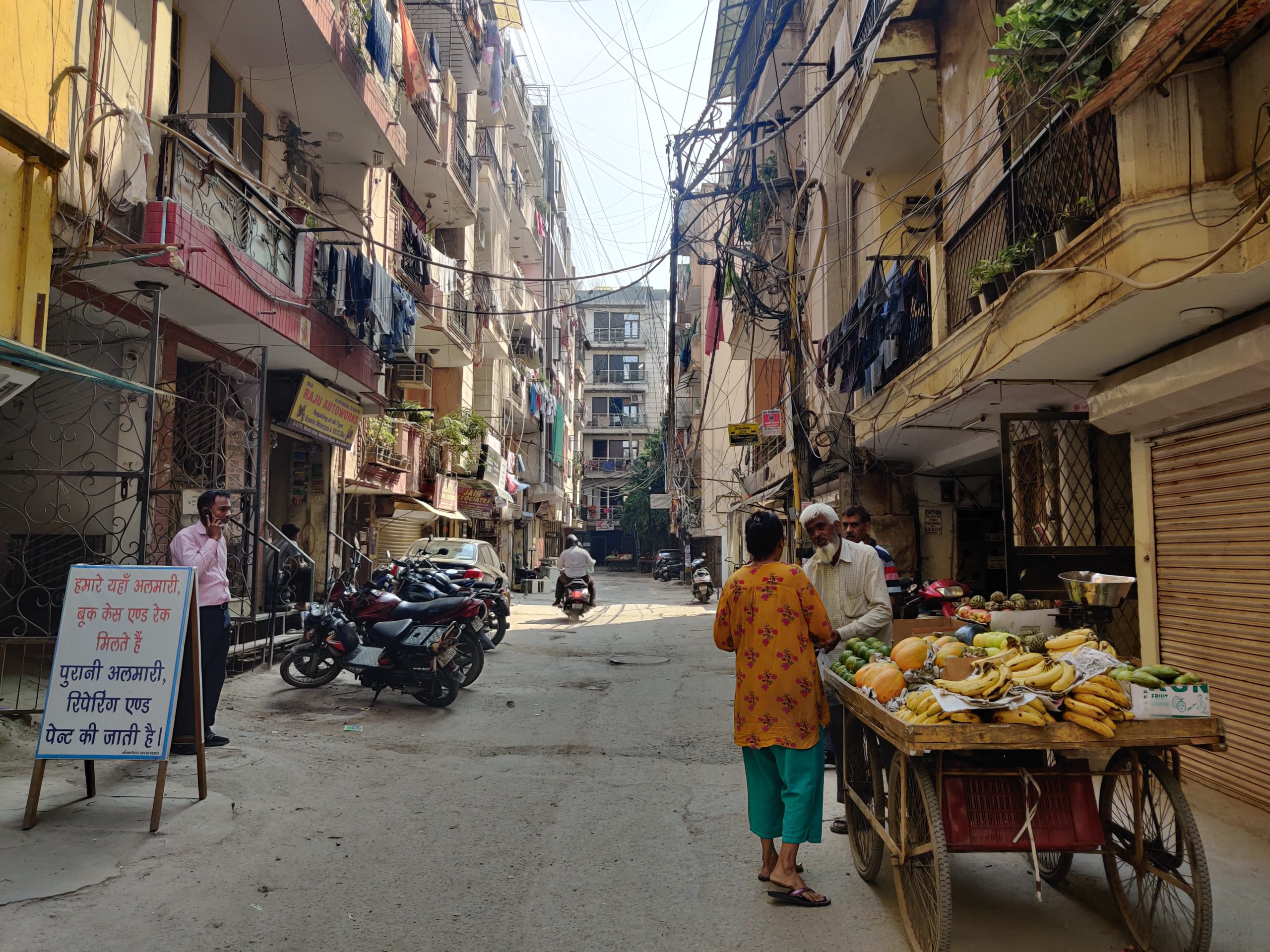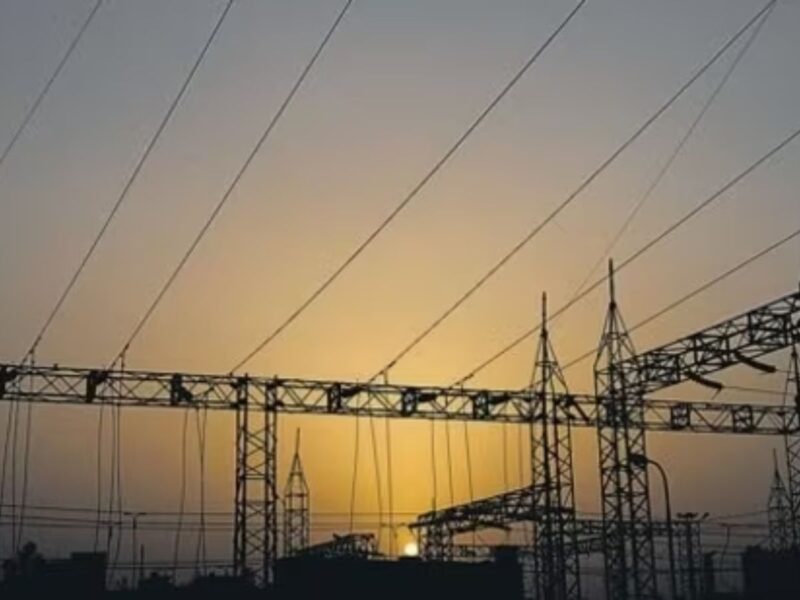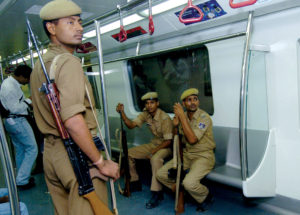With grievances lodged under MCD’s building department pending and DDA’s redressal app failing to address these issues – Delhi’s long-drawn struggle to deal with the hazards of illegal constructions and encroachment continues
Delhi has witnessed a few building collapses, where not just property but lives have been lost – most recently in North Municipal Corporation District’s (North MCD) Sabzi Mandi Area. While the corporation cleared its name, saying no complaint had been lodged against illegal construction — we found that the corporation and also Delhi Development Authority is slow in reacting to complaints filed.
Many residential areas in the capital city witness illegal constructions, be it multiple storeys built without permission, or just plain extension of balconies – but the complaints addressal of these problems is negligible at best.
The main MCD website interestingly shows that out of the grievances lodged under the building department, most cases remain pending (see screenshot) with the “assistant commissioner.” The numbers it showed were for the last one year — from October of 19, 2020 to this year. In south zone there were 1,136 pending with the assistant commissioner, in west zone 1,098, in Rohini 606 and the greatest number of pending in the Najafgarh zone with 1,833. Central was the only zone which it showed had closed eight cases and had assigned 208 to grievance redressals with 592 pending.
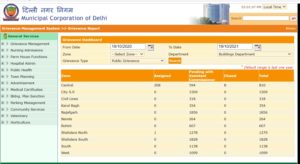
A senior official with the MCD spoke of their department’s shortcomings, with the condition of anonymity. He spoke of the well-known fact of corruption plaguing corporations, where staff take bribes and then also said that many a times, they choose to look the other way instead of breaking down illegal constructions.
“The fact is half of Delhi is illegal,” the official told us, as we met in his office at Minto Road. Many times, he said, those who have done illegal construction are people with lower incomes who cannot afford to buy space that would accommodate their needs. “It is a basic need of a person to have one roof. So, we see, people create more floors, expand balconies.”
He gave the example of the Pitampura region, where buying property is very expensive and the poor can’t afford it. “In the Pitampura region there are 60-meter square plots, 80-meter square plots. I guess even a 60 square meter plot would cost you around three crores. How would people afford it?” which he thinks is giving way for corruption. “People meet police personnel and our people (give bribes) and settle on unauthorized land. So, corruption has increased. Everyone is involved in it, because in many localities people are extremely poor.”
Majority of complaints MCD officials receive are from poor areas, “We don’t even take action in such cases, if we get 20 thousand complaints. You would find 15 thousand from those areas alone. Most of the poor live in these areas.”
The MCD official suggests that Delhi needs a good plan. “If someone has built four storeyed houses, we can’t demolish it. So, we should regularize it, because they are living there. If they haven’t encroached, then we should regularize.”
Such is the case in Khirki extension, which is located in Lal Dora village, one of the urban villages of Delhi. Here people have built multiple storeyed buildings in small lanes.
Lal Dora was an agricultural area acquired by DDA in 1962. Soon after, MCD declared this area as an “urban village”. With rising population and demand for residential land, the MCD exempted these areas from building bye-laws, which meant that owners could build without following any floor- areas ratio norms, even converting buildings from residential to commercial plots.
This scenario however changed in 2009, with the MCD clarifying that these exemptions were no longer applicable – a little too late, because in four decades, people not only encroached upon common land, but built five to six storeyed buildings. The encroachment has made these Lal Doras almost inaccessible for four wheelers as houses are built close together, narrowing the alleyways of these localities. This is a fire safety hazard, also would be total chaos if the buildings not inspected collapse due to faulty construction or earthquakes.
Even the Delhi high court recognised that, saying in 2017 that the Hauz Khas village, and erstwhile Lal Dora is now “a ticking time bomb”.
Buildings, old and new
People in Khirki extension may have lived for decades and multiple storeys made even before the clarification in 2009, but more buildings and floors keep getting added.
One such family, who have had the piece of land for over 30 years and have built a home there more than 20 years back are Prahlad and Ombati. Now retired, Prahlad’s five storeyed home most definitely has been built over years, as his children got married, and his family extended.
We met him and his wife, a couple in their seventies, as they sat outside their home after lunch, observing activities of neighbours and watching people passing by.
“This was farmland, we bought it some 30-35 years ago,” said Prahlad. “All houses here were built after we came here, there was nothing before us. Just farmland.” Small alleyways, overhanging electric wires is the view at Khirki extension, similar to most other Lal Dora villages. Houses have been built haphazardly, and most building owners are earning rents.
Prahlad’s neighbouring house being one of them. The building looked roughly made, housed people seemingly of economically weaker background with the ground floor having a main door missing– when enquired, we were told the gate broke off and hasn’t been fixed yet.
These residential colonies have become lands with no planning, keeping no consideration of how essential services can be reached. In Munirka – one of the Lal Dora villages – which is known for providing affordable housing especially for students, some lanes are so small that even auto rickshaws are unable to enter, let alone a fire brigade if an emergency called for it. People here have built 5-6 storeyed houses and have put them on rent.
The new draft master plan 2041 by the DDA has suggested the Lal Doras will be developed through land pooling – a new paradigm for urban development, in which the private sector will play an active role in assembling land and developing physical and social infrastructure. DDA will oversee the implementation of this policy. However, the haphazard development of the urban villages will be the biggest hurdle as authorities will face resistance when they try to remove illegal construction.
The problem is not limited to Khirki extension though. The South District Municipal Corporation (SDMC), under which Khirki falls, has 11,44,954 buildings under its jurisdiction. They have shared with us that until July 1 they had surveyed 9,98,778 buildings with just four out of them being found “dangerous.”
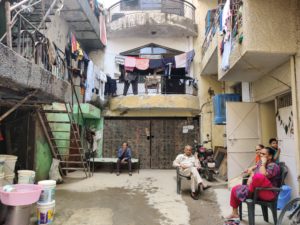
Under North MCD the website shows details of only the Keshav Puram zone and its buildings which were found with unauthorized construction. In July, under the Keshav Puram zone, one data shows 25 properties which were found to be with unauthorized construction. This included “deviation and excess coverage” from as far back as 2018, in a house in Model Town with the violations extending on the ground to the third floor of the house, the document noted.
Such was also the scenario in 12 other cases in another document found online, with concerns of unauthorised construction in areas of Shalimar Bagh, Sarita Vihar and Shalimar village. One even noted that the complaint was in continuance of a case filed in 2017 of excess coverage and deviation.
From this, in the case of eight flats — it noted demolition or sealing.
How does DDA handle it?
Patriot first got in touch with the Director of Housing, who refused to comment on the subject of illegal construction and grievance redressal. Next, we contacted the public relations officer of the DDA — but are yet to hear back.
Ironically, the authority’s grievance redressal mobile app called “DDA-311” has reviews mostly decrying their inability to meet with a solution. We went through a majority of the 181 reviews on the app store which has the application rated as 2.5 with over 10 thousand downloads.
The latest available annual report on the DDA website from 2017-18, called the launch of the app “started to redress the grievances of the public regarding unauthorised construction and encroachment on govt. land.”

But users said it fell short. One user named Dr Rachit Khatana rated it one star, wrote on the app last month on September 17 that it was “the most useless app on playstore and the most corrupted department in the whole world.. they just don’t listen to anyone.. automatically resolve the problems on the app without even checking with the person who complained or anything. It’s better than government should completely close DDA and privatise it to someone who can listen and work for the people.”
Another user, Rajesh Bhalla wrote on May 23, including in his review an accusation of what he called a huge nexus, saying: “there is huge nexus between builder and the officer. They keep on playing their joint efforts to keep on tossing the complaint matter and fooling around the justice.” While we cannot check the veracity of the claim, we mention it as only a review available in the app store.
One reviewer directly speaking about illegal construction, wrote on March 27 “poor experience, no one takes action on a lot of complaints regarding illegal & unauthorised construction, they are not bother to reply on comments even though an officer to whom complaint forwarded not to attend calls. Its seems that the officers took bribe from owner of plot”.
In fact, the annual report points out that it started an ‘Online Samasya Nidaan Sewa’ on DDA’s website to “resolve grievances of the general public and to send replies to the general public online.” But its numbers showed the slow resolution rate, noting that from April 1, 2017 till March 31, 2018 they received a total of 610 grievances with just 110 resolved, while a majority at 500 were pending.
But even the Centralized Public Grievances Redressal and Monitoring System (CPGRAMS) says that according to its procedure of functioning, that “grievances shall be resolved promptly as soon as they are received and maximum within 45 days.” It does however go on to say that “In case redressal is not possible within the prescribed time-frame due to the circumstances beyond the control of the Government such as sub-judice matters/ policy issues/ etc., an interim reply shall be given to the citizen.”
And while there are many issues of grievances unresolved, it goes beyond the conversation of redressal. In terms of buildings, illegal constructions are a major health and security hazard which authorities cannot circumvent.
(Cover: The MCD in 2009 clarified that areas like Khirki extention are no longer exempted from building bye-laws. But here, homes extended to 5-6 storeys are common // Credit: Sashikala VP)

